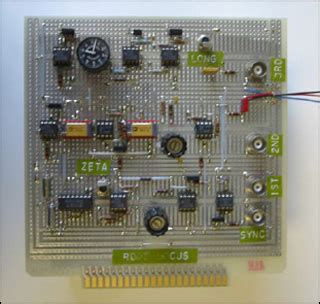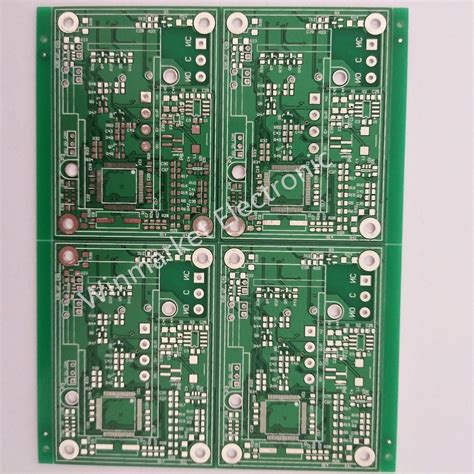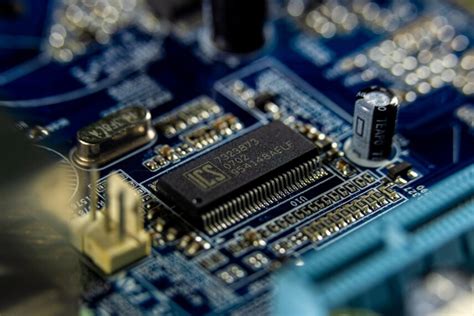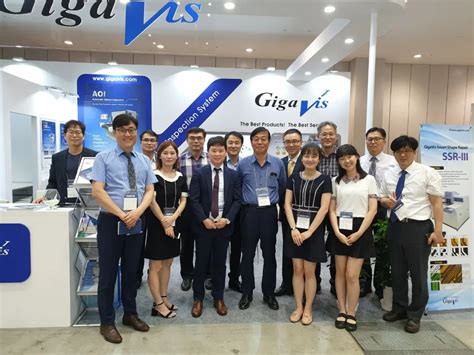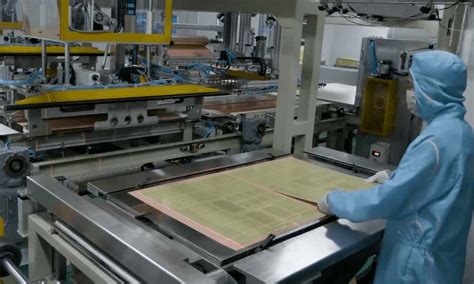Mastering Advanced Circuits Assembly: Techniques for Innovation
Key Takeaways
Mastering the art of pcb assembly is pivotal in today’s rapidly evolving tech landscape. To achieve optimal results in pcba, one must embrace both traditional and innovative techniques. For instance, utilizing advanced circuit design software can streamline the planning process, ensuring precision in the assembly phase. Furthermore, familiarity with essential tools and high-quality materials enhances the overall integrity of your projects. Staying updated on cutting-edge technologies can lead to significant improvements in performance and efficiency—key factors that influence the success of electronic devices. Moreover, troubleshooting common issues during assembly is critical to maintaining high standards and achieving desired outcomes. By integrating these innovative methods and adhering to best practices, engineers can harness the full potential of their designs while preparing for future trends in circuit assembly and design methodologies.
Introduction to Advanced Circuits Assembly
In today’s fast-paced world of electronics, advanced circuits assembly is no longer a specialized skill set; rather, it is an essential foundation for anyone looking to innovate in the field. The process of pcb assembly demands not only a deep understanding of circuit design principles but also familiarity with the latest assembly methods that streamline production and enhance functionality. Effective pcba requires precision, and employing innovative techniques can lead to substantial improvements in both performance and efficiency of electronic projects. As we explore the intricacies of circuit design, it’s evident that attention to detail during assembly can drastically reduce potential issues later on, making it crucial for novices and experts alike to adopt best practices. Moreover, as embedded systems evolve, incorporating cutting-edge technologies becomes vital in staying competitive. Understanding this complex landscape empowers creators to engineer solutions that are not only functional but also pioneering in their approach. With continuous advancements in materials and methods, the future of advanced circuits assembly promises exciting possibilities for enhancement and ingenuity in electronic designs.
Essential Tools and Materials for Circuit Assembly
When embarking on the journey of pcb assembly, having the right tools and materials is fundamental for achieving successful results. A comprehensive toolkit typically includes a soldering iron, which is essential for joining components to the printed circuit board (PCB). It’s crucial to select a soldering iron that allows for precise control of temperature and allows you to handle various types of solder, including lead-free options. Beyond the soldering iron, having a quality soldering station can greatly enhance your efficiency by providing a stable work environment.
In addition to tools, the choice of materials plays a pivotal role in the overall performance of any project. Choosing high-quality pcba components can significantly reduce failure rates in your circuits and lead to improved system stability. Utilizing flexible circuit boards can cater to more intricate designs, while adopting multi-layered boards helps in managing complex configurations without compromising on performance.
“Invest in quality over quantity—this principle holds especially true in circuit assembly,” suggests many industry experts.
Don’t forget about supportive tools such as tweezers, wire strippers, and multimeters; each is crucial for preparing your components effectively and ensuring that every connection is established correctly. With these essentials at hand, you will not only simplify the assembly process but also pave the way for innovation within your electronic projects. Whether you are working on a simple prototype or delving into more elaborate designs, having well-chosen tools and materials sets the foundation for successful advanced circuits assembly.
When you pay attention to detail and use high-quality products in your work, it reflects directly on the efficacy and durability of your electronic creations.
Techniques for Efficient Circuit Design
In the realm of advanced circuits assembly, optimizing the design process is crucial for achieving high-quality results in pcb assembly. One fundamental technique lies in employing modular designs, which allow for easier adjustments and enhancements during development. Additionally, utilizing simulation software can significantly reduce errors by allowing engineers to visualize circuit behavior before actual assembly. Another effective approach is design-for-manufacturing (DFM), which incorporates manufacturing constraints during the design phase, thus streamlining the entire process and ensuring that pcba can be executed with minimal complications.
Moreover, the integration of effective layer stacking in printed circuit boards (PCBs) not only improves signal integrity but also minimizes electromagnetic interference (EMI). Focusing on precise component placement is essential to reduce lead lengths and improve overall performance. Utilizing automated design tools can also aid in better organization of your components, making it easier to troubleshoot potential issues later on.
Adopting a methodical approach to documentation throughout each phase of your project will support clear communication between team members and suppliers, fostering collaboration and innovation. Collectively applying these techniques leads to a more efficient circuit design process that enhances performance and drives successful electronic project outcomes.
Innovative Assembly Methods
In the world of electronics, innovative assembly methods play a pivotal role in ensuring optimal pcb assembly efficiency and pcba performance. By leveraging advanced techniques such as multi-layer construction and surface-mount technology, engineers can significantly enhance the reliability and functionality of their designs. One notable approach is the implementation of automated soldering processes, which not only reduces human error but also increases throughput in production. Another technique that has gained traction is the use of modular assembly systems, allowing for easier troubleshooting and upgrades, promoting long-term sustainability in electronic projects. Furthermore, incorporating flex circuits into designs offers unparalleled design flexibility and can lead to slimmer product profiles without compromising on performance. As the demand for smaller yet more powerful devices continues to rise, embracing these cutting-edge technologies will be crucial for any professional aiming to succeed in the competitive landscape of electronic circuitry. The focus on meticulous assembly processes ensures that innovations not only meet current market needs but also pave the way for future advancements in circuit design.
Incorporating Cutting-Edge Technologies
In today’s fast-paced technological landscape, pcb assembly processes have evolved significantly, integrating innovative tools and methodologies. By leveraging advanced software solutions and automated systems, engineers can streamline the pcba workflow, enhancing precision and efficiency. One notable advancement is the use of 3D printing technology in prototyping components, which allows for rapid iteration and reduced lead times. Additionally, the incorporation of smart manufacturing techniques—such as IoT integration—enables real-time monitoring of assembly processes, ensuring consistently high standards and reducing error rates.
| Technology | Advantage |
|---|---|
| 3D Printing | Rapid prototyping and customization |
| IoT Integration | Real-time monitoring for quality control |
| Automated Assembly Systems | Increased efficiency and reduced labor costs |
| Machine Learning Algorithms | Enhanced design optimization through predictive analytics |
These advancements not only boost productivity but also foster an environment conducive to experimentation. As new technologies emerge, keeping abreast of industry trends will be crucial for those involved in advanced circuits assembly, allowing them to adapt and innovate consistently. Ensuring that teams are equipped with the knowledge of these technologies will facilitate smoother transitions in the evolving landscape of electronic project development.
Troubleshooting Common Circuit Issues
When engaging in pcb assembly processes, one often encounters a variety of challenges that can impact the functionality and reliability of the final product. Common issues include incorrect soldering, which can lead to poor electrical connections, and component misplacement that disrupts circuit integrity. Understanding how to recognize these problems is key to effective troubleshooting. For instance, confirming the solder joint structure through visual inspection can help identify pcba errors before they escalate into bigger faults. Additionally, verifying the connections against the schematic diagram ensures that all components are in their designated positions, thus avoiding potential short circuits. Utilizing test equipment like multimeters or oscilloscopes is integral for diagnosing signal integrity issues and identifying unwanted noise in a circuit. By adhering to systematic troubleshooting techniques, one can significantly enhance the overall performance and reliability of their electronic projects while ensuring efficient advanced circuits assembly practices are upheld.
Best Practices for Performance Optimization
To achieve optimal performance in pcb assembly, several best practices should be integrated into your workflow. First and foremost, thorough planning is essential. Begin with a well-structured circuit design that clearly defines component placement and signal pathways, as this reduces potential issues during the pcba process. Utilize quality materials and components, as using superior parts can significantly enhance the reliability and longevity of your assemblies. Additionally, maintaining a clean work environment is crucial; dust and debris can lead to poor connections or shorts.
Regularly testing your circuits at various stages of assembly not only aids in early detection of issues but also ensures that each component meets performance standards before proceeding. Equally important is proper thermal management; effective heat dissipation techniques can prevent overheating, ensuring consistent performance over time. Finally, staying informed about advancements in circuit assembly technologies can provide fresh insights into improving efficiency and effectiveness in your projects. By adhering to these practices, you can significantly boost both the performance and durability of your electronic devices while streamlining the assembly process.
Future Trends in Circuit Assembly and Design
As we look toward the future of advanced circuits assembly, several key trends are emerging that promise to redefine the landscape of electronic manufacturing. One significant advancement is the rise of integrated pcba processes that combine design and assembly phases, streamlining production and reducing lead times. This synergy not only enhances efficiency but also minimizes errors throughout the pcb assembly cycle. Furthermore, with the increasing demand for compact electronics, manufacturers are turning to innovative materials and techniques that allow for smaller components without sacrificing performance. The adoption of cutting-edge technologies, such as automation and machine learning, is transforming traditional manual processes into highly efficient workflows. Additionally, industry leaders are recognizing the importance of sustainable practices in circuit design, promoting eco-friendly materials in pcb assembly to reduce waste. As these trends continue to unfold, they will foster a new era of innovation in circuit assembly and design, making electronics more efficient, sustainable, and adaptable to consumer needs.
Conclusion
In the realm of advanced circuits assembly, understanding the various methodologies and technologies available is paramount for successful implementation. Techniques such as pcb assembly and pcba not only streamline production but also enhance the durability and performance of electronic devices. By employing innovative assembly methods, engineers can reduce assembly time while maintaining high standards of quality and accuracy. Moreover, the integration of cutting-edge technologies into circuit design offers unique solutions for common challenges encountered during assembly processes. Emphasizing best practices for performance optimization and troubleshooting common circuit issues will equip practitioners with the skills necessary for achieving successful project outcomes. As we move toward future trends in circuit assembly, embracing these advancements will undoubtedly play a crucial role in shaping the electronics landscape, enabling more efficient, reliable, and powerful devices than ever before.
FAQs
What is PCB assembly?
PCB assembly, or pcba, refers to the process of assembling electronic components onto a printed circuit board (PCB). This involves soldering components to the board to create a functional electronic circuit.
What techniques are used in advanced circuits assembly?
Advanced circuits assembly utilizes various techniques, including surface mount technology (SMT), through-hole technology, and mixed technology, which combines both types. These methods optimize the layout and performance of circuits.
How can I enhance performance in my PCB projects?
To enhance performance in your pcb assembly projects, consider adopting innovative strategies such as proper thermal management, using high-frequency components, and minimizing trace lengths on the PCB for better signal integrity.
What common issues arise during circuit assembly?
Common issues during circuit assembly may include soldering defects, component misalignment, and inadequate thermal management. Identifying these problems promptly is crucial for ensuring functionality and efficiency.
Where can I find resources for efficient circuit design?
Numerous online platforms offer resources related to pcba, such as tutorials and forums. Engaging with community knowledge can provide insights into effective design principles and troubleshooting techniques.

